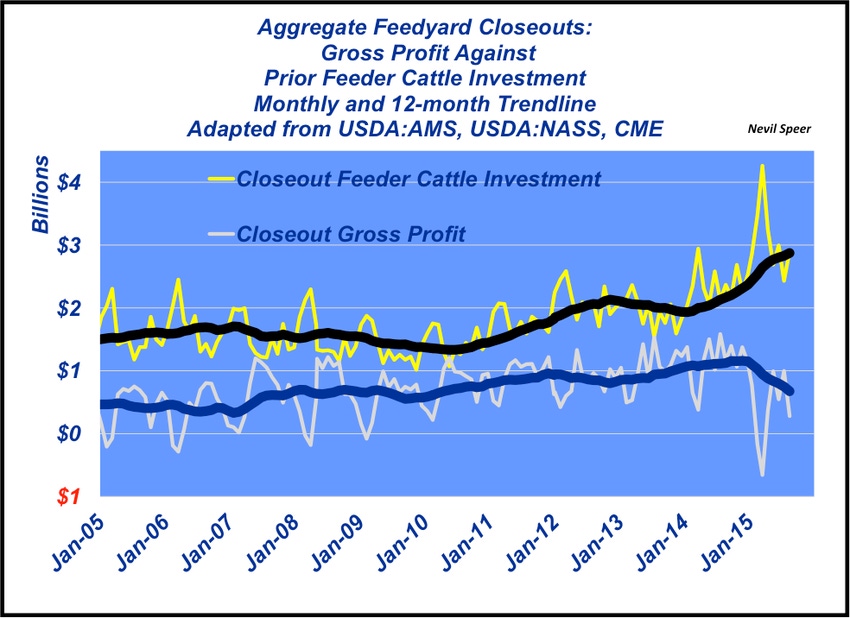Even with the feeder cattle market’s plunge, capital at risk is still high for cattle feeders.
October 8, 2015

The cattle market meltdown since early April has been historic from any number of perspectives. However, the most important outcome of the market’s demise during the past six months revolves around the levels of capital at risk in this recent downturn.
This week’s graph highlights the surging cost of feeder cattle in recent years. The illustration is based on monthly closeouts reflecting the aggregate cost of feeder cattle placements five months prior to closeout. The most expensive closeouts occurred in March 2015. Cattle sold then were placed roughly last October when the feeder cattle market peaked, with an aggregate value of over $4 billion.
The graph also depicts closeout gross profit, which is fed cattle value less purchased cost of feeder cattle. Gross profit peaked in 2014 and then plummeted sharply this spring, even with a strong fed market. Accordingly, Kansas State University calculates that closeouts began turning negative in February 2015. Clearly, that negative trend will continue, given the fed cattle market’s sharp plunge during September.

Most important are the general trends and rolling 12-month average. Cattle feeders are experiencing a strong downturn in gross profit that began in earnest with 2015. Meanwhile, that occurred against the most expensive feeders on record. As such, the gross profit ROI is exceptionally weak and trending in the wrong direction.
The take-home is that it’s more than just the fed market that’s causing pain for cattle feeders. It’s a weak fed market occurring against high-priced placements. That’s really what drives the feeding sector to fight the market.
Where do you see this trend headed? How much will the feeding sector fight the feeder market in the next several rounds of replacements? Ultimately, how much pressure will remain on the feeder cattle marketing going forward? What are the long term impacts of 2015’s losses in the cattle feeding sector?
Leave your thoughts in the comments section below.
You might also like:
15 photos showcase hardworking American ranchers
Genetic accident produces White Angus
What's the best time to castrate calves? Vets agree the earlier the better
About the Author(s)
You May Also Like





